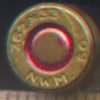Silent-Snail
Member
I'm trying to educate some friends on various calibers however I keep running into one problem. Simply put I can't find the full metric measurements for most calibers I need.
Here is a list of the ones I need, .22LR, .38 Special, .380 ACP, .45 Long Colt, .45 ACP, .44 Magnum, .454 Casul, .50 AE, .40 S&W, 10mm Auto, .303 British, .30-30, .30 US Carbine, .30-06, and .50 BMG.
For those of you who might know what I need, but not what I mean, an example of the format I'm looking for is 7.62x51, not 7.62 Nato.
Thanks in advance.
Edited at 10:18 AM Sorry I forgot to mention that I also need cartrige length. Thanks for the help so far [/I]
Here is a list of the ones I need, .22LR, .38 Special, .380 ACP, .45 Long Colt, .45 ACP, .44 Magnum, .454 Casul, .50 AE, .40 S&W, 10mm Auto, .303 British, .30-30, .30 US Carbine, .30-06, and .50 BMG.
For those of you who might know what I need, but not what I mean, an example of the format I'm looking for is 7.62x51, not 7.62 Nato.
Thanks in advance.
Edited at 10:18 AM Sorry I forgot to mention that I also need cartrige length. Thanks for the help so far [/I]
Last edited:



